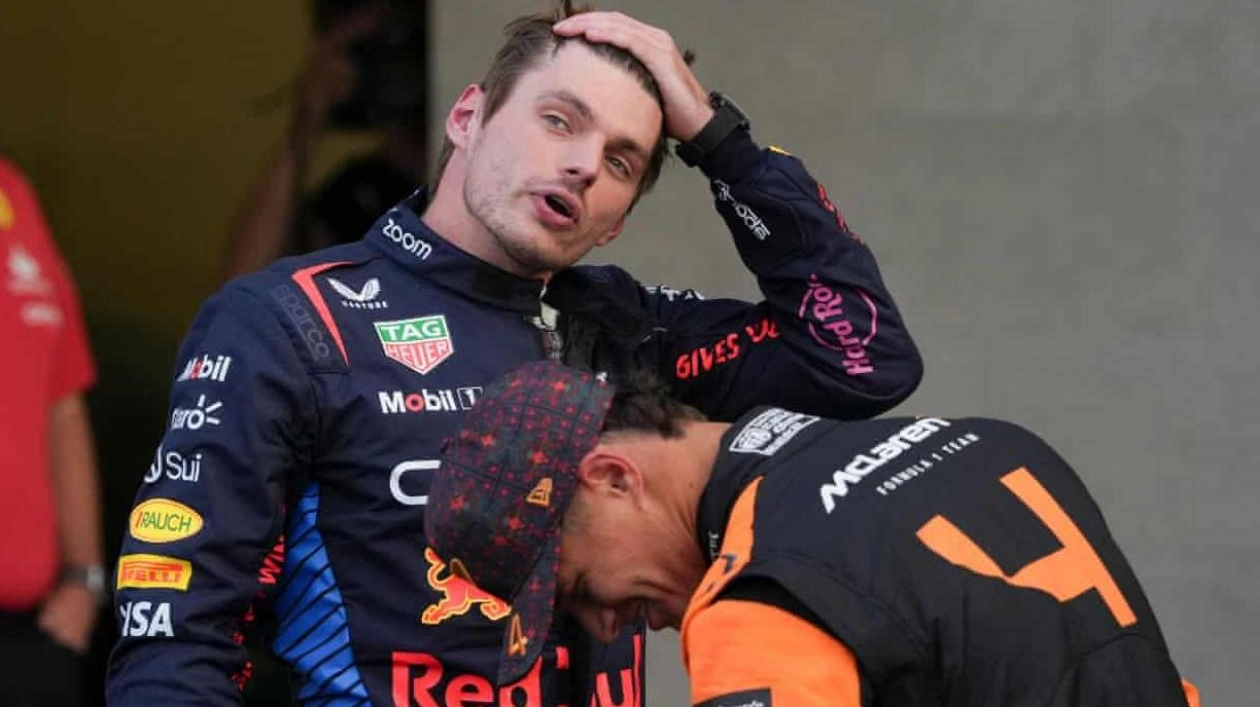Two races and two pivotal moments, the world championship duel between Max Verstappen and Lando Norris is intensifying. Both drivers are fully committed, leaving nothing to chance in the final four races. The Mexico City Grand Prix on Sunday highlighted Verstappen's relentless pursuit of his fourth title. He remains as aggressive as ever, possibly because he feels the pressure like never before since his close battle with Lewis Hamilton in 2021.
Norris and Verstappen had a heated encounter at the previous round in Austin, with Norris penalized for going off track while attempting to overtake the reigning champion. Many felt the decision was unjust, as Verstappen had aggressively forced Norris off the track. There was significant unrest, leading to a meeting between drivers and the FIA to clarify the driving guidelines, which dictate what is permissible in attacking and defending through corners.
In Mexico, they clashed again, and this time Verstappen was penalized. He was sanctioned for forcing Norris wide at turn four and later for an aggressive move at turn seven, where he gained a position by going off track. Norris finished second, five seconds behind winner Carlos Sainz of Ferrari, while Verstappen, after his 20-second penalty, finished sixth. This result narrowed the gap between Norris and Verstappen to 47 points, still a significant challenge but one Norris remains optimistic about, especially with the next round in Brazil this weekend.
Verstappen's reaction suggested he viewed the race outcome with a critical eye. “The problem is when you are slower, you are put in these situations. I am not going to give up easily,” he said. “We are too slow. That is my problem.” This implies that he has no qualms about driving aggressively—even when deemed illegal—when he feels compelled to do so due to being on the defensive. This attitude echoes his tactics against Hamilton in the closing stages of 2021.
Verstappen has been accused of exploiting the rules, and his calm acceptance of the penalties suggests he is aware of this. “Can the rules be better? Maybe yes, maybe not,” he said. “It’s always the same thing. I just drive how I think I have to drive.” By driving in this manner, Verstappen gained an advantage over Norris. Norris was stuck behind the Red Bull for the first stint until the pit stops, during which Sainz was able to build a lead Norris couldn't close. Without the delay, Norris might have had a chance at victory and more points off Verstappen.
Verstappen is not only fast but also strategic, likely considering every angle, especially as his car's perceived lack of pace became evident. Without the penalty, he would have finished 40 seconds behind Sainz and likely in fourth or even fifth place. If Norris’s teammate, Oscar Piastri, had qualified better, he could have been in contention for the front positions, potentially pushing Verstappen further down the order.
A win for Norris in Brazil could result in a 15-point swing in his favor, making Verstappen's lead less secure. This is driving Verstappen to exploit every possible advantage, walking a fine line between acceptable and unacceptable behavior. The stewards in Mexico made it clear that Verstappen was on the wrong side of the driving guidelines.
How this plays out in the final races could be crucial, especially if McLaren and Ferrari maintain their edge over Red Bull. The drivers are keen for clearer guidelines sooner rather than later. George Russell, a director of the Grand Prix Drivers’ Association, welcomed the decisions in Mexico. “I’m glad to see those incidents were punished, and I suspect moving forward in Brazil, what we saw today and last week won’t be tolerated,” he said.
Russell also noted that after the drivers' meeting with the FIA in Mexico, “19 out of 20” drivers agreed on the need for immediate changes to the guidelines. He did not specify who the lone dissenter was.
Source link: https://www.theguardian.com






